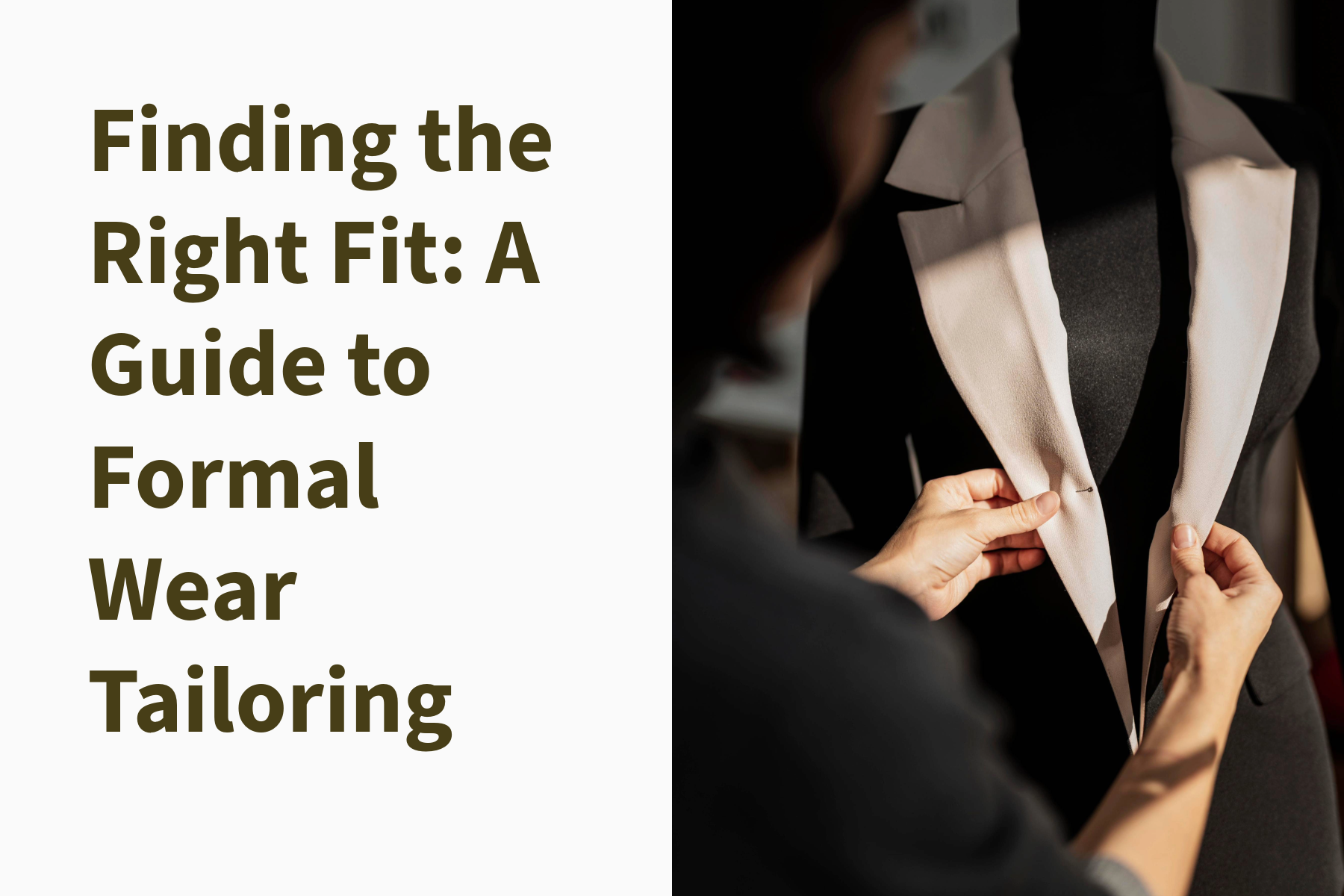Currently Empty: 0.00

There’s something magical about wearing an outfit that fits just right. The shoulders sit perfectly, the sleeves graze the wrist, and the hemline doesn’t need constant adjusting. That’s the power of good tailoring—and when it comes to formal wear, it can make all the difference.
Whether you’re getting ready for a job interview, corporate dinner, or formal celebration, your outfit should feel like it was made just for you. Here’s a human-friendly guide to tailoring that helps you look sharp, feel comfortable, and walk with confidence.
Why Tailoring Matters More Than You Think
Off-the-rack clothes are designed for general sizes, not your unique body shape. That’s why even the most expensive outfit can look awkward if it doesn’t fit right. On the other hand, a moderately priced outfit with expert tailoring can make you look like a million bucks.
Tailoring isn’t about changing your body—it’s about making clothes that honor it.
1. Start with the Basics: Know Your Measurements
Before you walk into a tailor’s shop or click “order” online, it helps to know your key measurements. These include:
- Bust/Chest
- Waist
- Hips
- Shoulder width
- Arm length
- Inseam (for pants)
Getting professionally measured just once can save you from endless fitting room frustration in the future. If you’re shopping online, many platforms now guide you based on these numbers.
2. Invest in Versatile Pieces Worth Tailoring
Not every piece in your wardrobe needs a trip to the tailor. Focus on tailoring staple items you’ll wear often, such as:
- A well-cut blazer
- Classic dress pants
- A formal midi dress or pencil skirt
- A structured button-down shirt
- Evening gowns or ethnic formal wear (like sarees, lehengas, or suits)
Once you have your foundational pieces altered to fit like a glove, you’ll find it easier to mix and match with other wardrobe items.
3. Common Tailoring Fixes That Work Wonders
Tailors can do a lot more than you might think. Here are a few small tweaks that make a huge impact:
- Shortening hems (on pants, skirts, or sleeves)
- Taking in or letting out the waist
- Adjusting darts for a cleaner fit at the bust
- Nipping in a blazer for a more defined silhouette
- Tapering pant legs for a modern look
Pro tip: Always wear the shoes you plan to pair with the outfit when visiting the tailor—especially for pant or dress hemming.
4. Formal Wear Tips for Men and Women
For Women:
- Dresses should skim, not squeeze. Make sure zippers close easily and fabric doesn’t pull.
- Tailored blazers or jackets that cinch slightly at the waist flatter most body types.
- Adjust strap lengths on dresses or tops to avoid awkward gaping.
For Men:
- Shoulder seams should align perfectly with your shoulders—this is difficult to fix post-purchase, so shop carefully.
- Jacket sleeves should show a half-inch of shirt cuff.
- Pants should slightly break over the top of your shoes—not bunch at the bottom.
5. Tailoring Doesn’t Have to Be Expensive
You don’t need to spend a fortune. Local tailors or alteration services at dry cleaners can often do excellent work for reasonable rates. And remember, it’s still more budget-friendly than replacing an entire wardrobe because something almost fits.
6. How to Talk to Your Tailor
Don’t be afraid to communicate. Bring inspiration photos if needed and explain the occasion you’re dressing for. A good tailor will not only alter your clothes but also suggest tweaks that elevate the entire look.
Be open to suggestions—sometimes a small adjustment you hadn’t considered (like moving a button or adding a dart) can completely transform the outfit.
Confidence Is the Best Fit of All
The right fit isn’t just about how you look in the mirror. It’s about how you feel when you walk into a room. When your clothes move with you instead of against you, your posture shifts, your energy lifts, and people notice.
Tailoring is an act of self-respect—it says you care about how you present yourself, and you value feeling comfortable in your own skin. So, whether you’re prepping for your next big meeting or getting dressed for a formal event, remember this: you don’t need more clothes—you just need the right fit.

